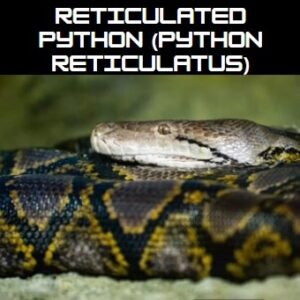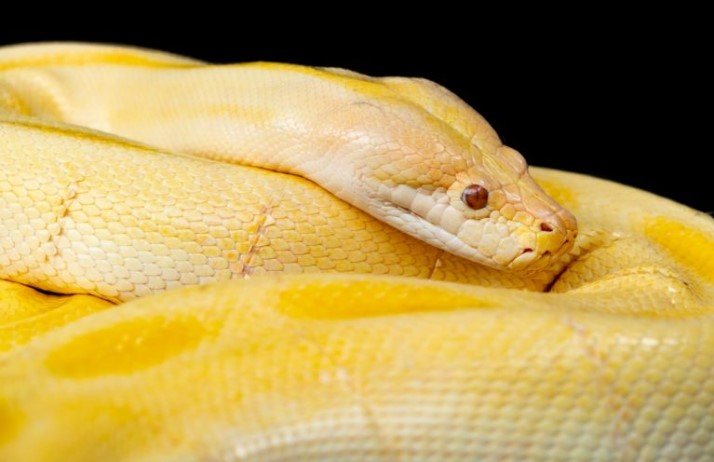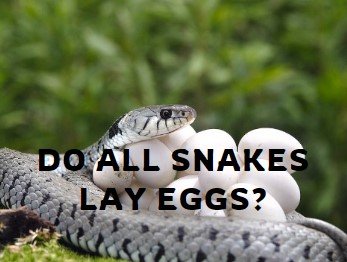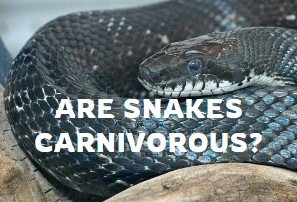Introduction
In the dense jungles of Southeast Asia, a creature of awe-inspiring proportions silently moves through the undergrowth—the reticulated python. Renowned for its remarkable size and unparalleled strength, the reticulated python commands attention and fascination. In this exploration, we delve into the characteristics and behaviors that make these serpents truly record-breaking.

Anatomy and Size
Reticulated pythons, scientifically classified as Python reticulatus, are recognized for their distinctive patterns and incredible size. As the world’s longest snake, they can exceed lengths of 20 feet and, in exceptional cases, even approach 30 feet. This places them in a league of their own among python species. Their sleek bodies, adorned with intricate geometric patterns, make them not only formidable predators but also mesmerizing creatures to behold.
Growth Patterns
The growth trajectory of reticulated pythons is nothing short of astonishing. During the early years, these snakes exhibit rapid growth rates, with individuals reaching impressive sizes within a relatively short period. Various factors, including environmental conditions, availability of prey, and genetic predisposition, contribute to the varying growth patterns observed in different individuals.
Constricting Abilities
The hallmark of reticulated pythons lies in their constricting abilities. The mechanism is both elegant and effective—a powerful and coordinated embrace that subdues their prey. This adaptation not only ensures successful hunting but also plays a crucial role in the digestive process. Reticulated pythons possess unique anatomical features that enhance their constricting prowess, allowing them to overpower prey of considerable size.
Feeding Behaviors
The dietary habits of reticulated pythons are broad and diverse. These snakes are known to consume a range of prey, including mammals, birds, and even larger reptiles. Their hunting techniques involve patience and stealth, often relying on ambush strategies. By maintaining a balanced ecosystem through their predation, reticulated pythons contribute to the overall health and biodiversity of their habitat.
Interaction with Humans
Throughout history, reticulated pythons have been subjects of fascination, myth, and occasional fear. Encounters with humans, while infrequent, have led to both awe-inspiring tales and cautionary legends. Responsible practices, including understanding their behavior and habitats, are essential for fostering coexistence between humans and these remarkable reptiles.
Reticulated Pythons in Captivity
While some enthusiasts are drawn to the idea of keeping reticulated pythons as pets, it comes with significant challenges. Their impressive size, complex care requirements, and potential for unpredictability necessitate responsible ownership. Breeding programs in captivity aim to reduce pressures on wild populations, but ethical considerations must guide the pet trade to ensure the well-being of these creatures.
Conservation Status
Despite their resilience, reticulated pythons face threats to their populations. Habitat loss, poaching, and conflicts with humans pose challenges to their survival. Conservation efforts, including habitat protection and community education, play a crucial role in preserving the natural balance of ecosystems where reticulated pythons thrive.
Popular Culture and Media Depictions
Reticulated pythons have slithered into popular culture through movies, documentaries, and literature. While media exposure can foster awareness and appreciation, it also contributes to misconceptions. Educating the public about these creatures and their vital role in ecosystems is essential for promoting responsible attitudes and conservation efforts.
Conclusion
As we conclude our exploration of record-breaking reticulated pythons, we reflect on the delicate balance between fascination and conservation. These extraordinary creatures, with their unparalleled size and strength, command our attention and respect. It is incumbent upon us, as stewards of the natural world, to approach their existence with responsibility, awareness, and a commitment to preserving the ecosystems they call home.
Learn more about Green Anaconda:Queen of Amazon.
FAQs
- Are reticulated pythons dangerous to humans? While reticulated pythons are not inherently aggressive toward humans, their large size and strength make them potentially dangerous if not handled with caution. Respectful observation from a distance is recommended.
- Do reticulated pythons make good pets? Reticulated pythons require specialized care, a significant amount of space, and an understanding of their unique needs. Keeping them as pets is recommended only for experienced reptile enthusiasts.
- How can I contribute to reticulated python conservation? Supporting reputable conservation organizations, raising awareness about the importance of preserving their habitats, and advocating for responsible pet ownership are ways to contribute to reticulated python conservation.
- Why are reticulated pythons important for their ecosystems? Reticulated pythons play a crucial role in controlling prey populations, maintaining ecological balance, and contributing to the overall biodiversity of their habitats.
- Can reticulated pythons be found outside of Southeast Asia? While their native range is in Southeast Asia, reticulated pythons have been introduced to other regions, including parts of Florida. The introduction of non-native species can have ecological consequences and is a concern for conservationists.





Leave a Reply